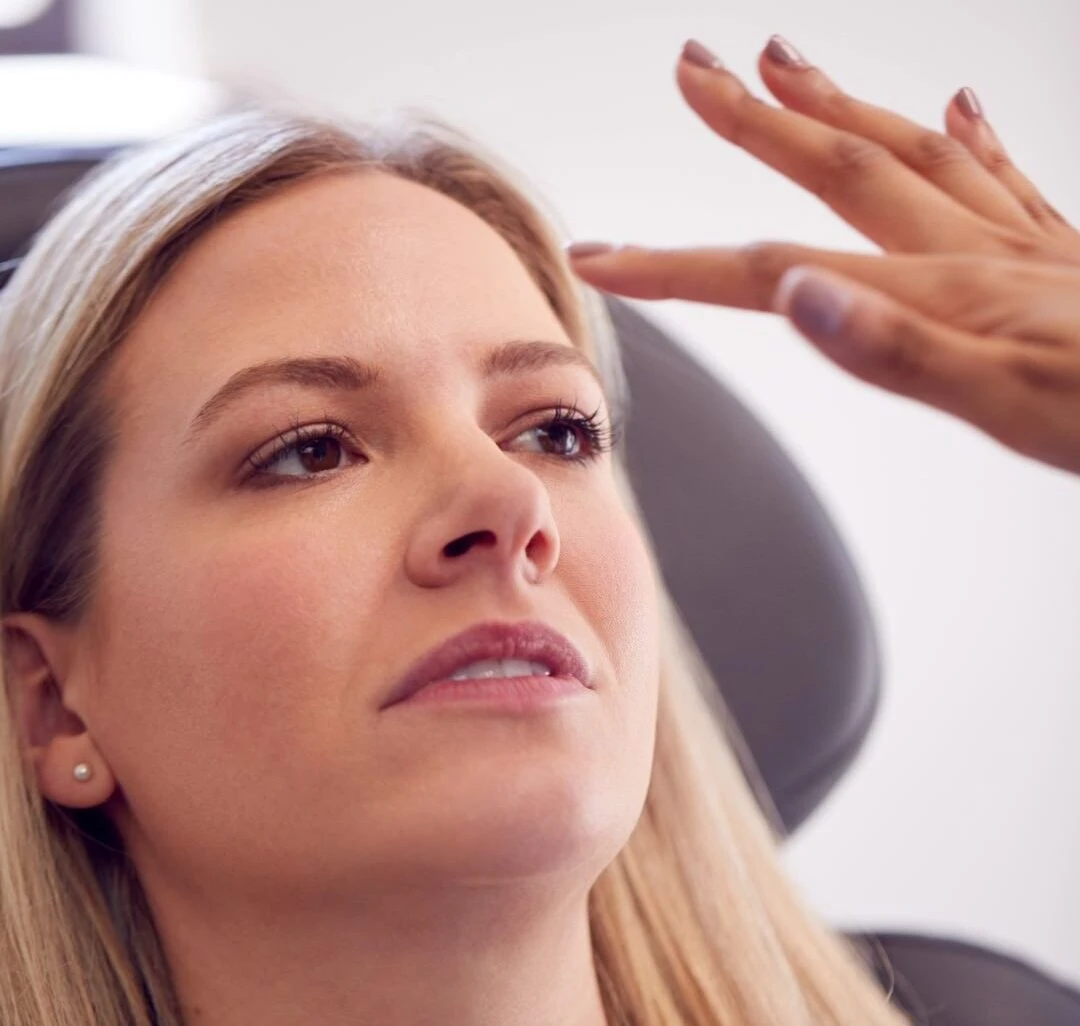
Are you thinking about improving the look of your nose but don’t want to go through surgery? If so, non-surgical rhinoplasty might be the perfect option for you. This modern, minimally invasive treatment lets you make subtle yet noticeable changes to your nose without any cuts or long recovery times.
In this article, we’ll explain everything you need to know about non-surgical rhinoplasty—what it is, how it works, its benefits and limitations, safety, and what to expect before and after the procedure.
What Is Non-Surgical Rhinoplasty?
Non-surgical rhinoplasty, often called a liquid or filler nose job, is a quick and safe way to reshape your nose using injectable fillers instead of surgery. The most common fillers are made from hyaluronic acid (HA), a natural substance found in the body that adds volume and smooths the skin.
During the procedure, a trained medical professional injects small amounts of filler into specific parts of your nose to improve its shape and balance. This can include lifting a drooping tip, straightening the nose bridge, smoothing bumps, or correcting minor asymmetry.
How Does Non-Surgical Rhinoplasty Work?
The treatment focuses on three main areas of the nose:
- Tip/Supratip: Injections here refine and lift the nose tip, helping with a drooping or bulbous tip.
- Columella: This is the area at the base of the nose, between the nostrils. Filling here enhances tip projection and rotation for a better side profile.
- Radix: Located between the eyes at the top of the nasal bridge, injections in this area can straighten the bridge and improve definition.
Depending on your unique facial structure, the practitioner may also treat other areas such as the nasal bridge (to smooth bumps), nasal sidewalls (to fix asymmetry), or the alar base (to adjust nostril shape or width).
The goal is to carefully sculpt your nose to improve its appearance while keeping it natural.
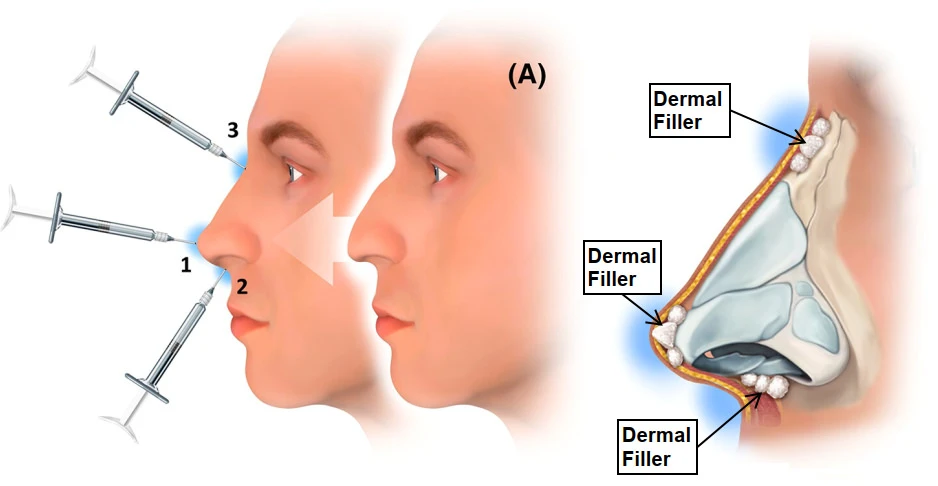
What Can Non-Surgical Rhinoplasty Fix?
Non-surgical rhinoplasty is ideal for:
- Lifting a weak or drooping nasal tip
- Straightening a crooked nose or uneven bridge
- Smoothing bumps or dorsal humps
- Correcting minor asymmetry or irregularities
- Improving overall balance and harmony of facial features
It is important to understand that this treatment cannot reduce the size of your nose or fix major structural or breathing issues. Those conditions require surgical rhinoplasty.
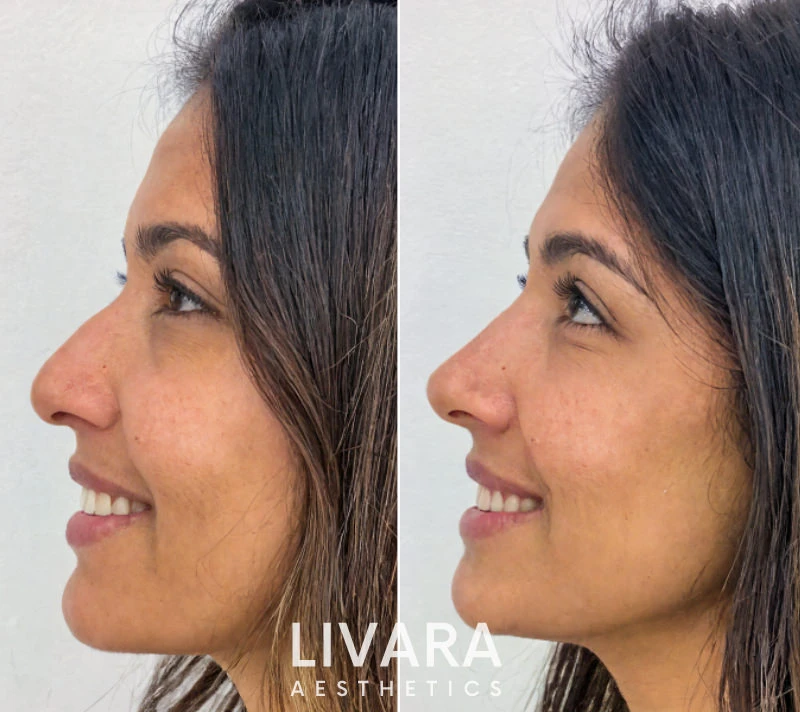
Benefits of Non-Surgical Rhinoplasty
- Quick and Convenient: The procedure usually takes less than an hour.
- Immediate Results: You’ll notice changes right away, with improvements becoming even better as swelling settles.
- Minimal Downtime: You can resume most daily activities immediately. Some swelling or bruising may occur but usually fades within a few days.
- Reversible: If you don’t like the results, hyaluronic acid fillers can be dissolved using an enzyme called hyaluronidase.
- Lower Risk: There’s no anesthesia, incisions, or permanent changes, so risks are generally low.
- Cost-Effective: Non-surgical rhinoplasty is usually less expensive than surgery and avoids hospital or operating room fees.
Limitations and Considerations
While non-surgical rhinoplasty offers many benefits, it does have some limits:
- It cannot make your nose smaller or correct major deformities.
- Results are temporary, typically lasting 6 to 18 months depending on the filler used.
- Maintenance treatments are needed to keep the results.
- Choosing an experienced practitioner is vital to reduce risks and ensure natural-looking results.
What Happens During the Procedure?
Before treatment, you’ll have a consultation to discuss your goals and get a facial assessment. Your practitioner will explain the process and answer your questions.
During the procedure:
- Numbing cream or local anesthesia may be applied for comfort.
- The practitioner will inject small amounts of filler into chosen areas using fine needles or cannulas.
- The process is precise and tailored to your facial anatomy.
- You might feel slight pressure or mild discomfort, but it is generally well tolerated.
Afterward, you may experience mild swelling or bruising, which usually improves within a few days.
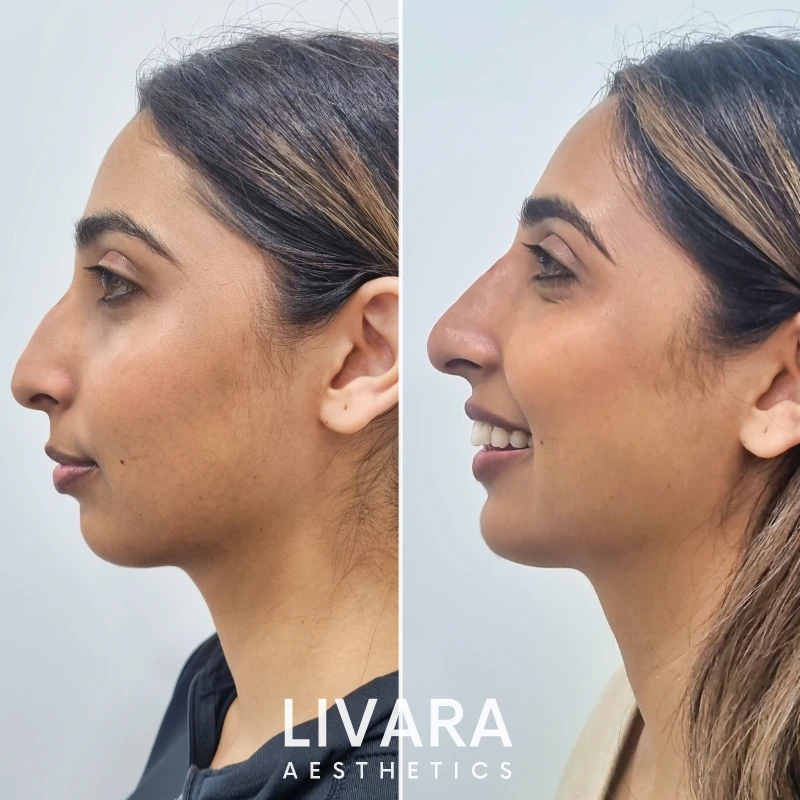
Types of Fillers Used
Most clinics use hyaluronic acid (HA) fillers for non-surgical rhinoplasty because they are safe, natural, and reversible. Some other fillers like Calcium Hydroxylapatite (CaHA) or Poly-L-lactic Acid (PLLA) exist, but they are less common and may not be reversible, which can increase risks.
At reputable clinics, safety is a priority, so HA fillers are the standard choice for reshaping the nose.
Safety and Possible Side Effects
Non-surgical rhinoplasty is generally safe when done by a qualified medical professional. Common side effects include temporary redness, swelling, bruising, or tenderness at injection sites. These usually resolve quickly.
Rare but serious risks include infection, vascular complications, or tissue damage. These are extremely uncommon and mainly happen when the procedure is performed by inexperienced practitioners.
Always choose a skilled and certified practitioner who understands facial anatomy well to minimize risks.

Aftercare Tips
To get the best results:
- Avoid touching or massaging your nose for a few days.
- Stay away from strenuous activities or heavy exercise right after treatment.
- Use cold compresses to reduce swelling if needed.
- Protect your skin from excessive sun exposure.
- Attend your follow-up appointment to monitor your healing and results.
Non-Surgical Rhinoplasty vs. Surgical Rhinoplasty
Surgical rhinoplasty involves cutting and reshaping the bone and cartilage to permanently change your nose. It is best for those needing major changes or functional improvements like better breathing.
Non-surgical rhinoplasty offers temporary, subtle changes and is great for minor reshaping and contouring. It doesn’t require anesthesia or downtime, and you can reverse or adjust the results.
Choosing between them depends on your goals, budget, and comfort with surgery.
Who Is the Ideal Candidate?
Non-surgical rhinoplasty suits people who:
- Want to correct minor nose imperfections or asymmetry
- Are looking for a temporary, non-invasive option
- Have realistic expectations about what fillers can achieve
- Do not have major structural or breathing problems
During your consultation, your practitioner will assess your facial features, discuss your goals, and help decide if this treatment is right for you.
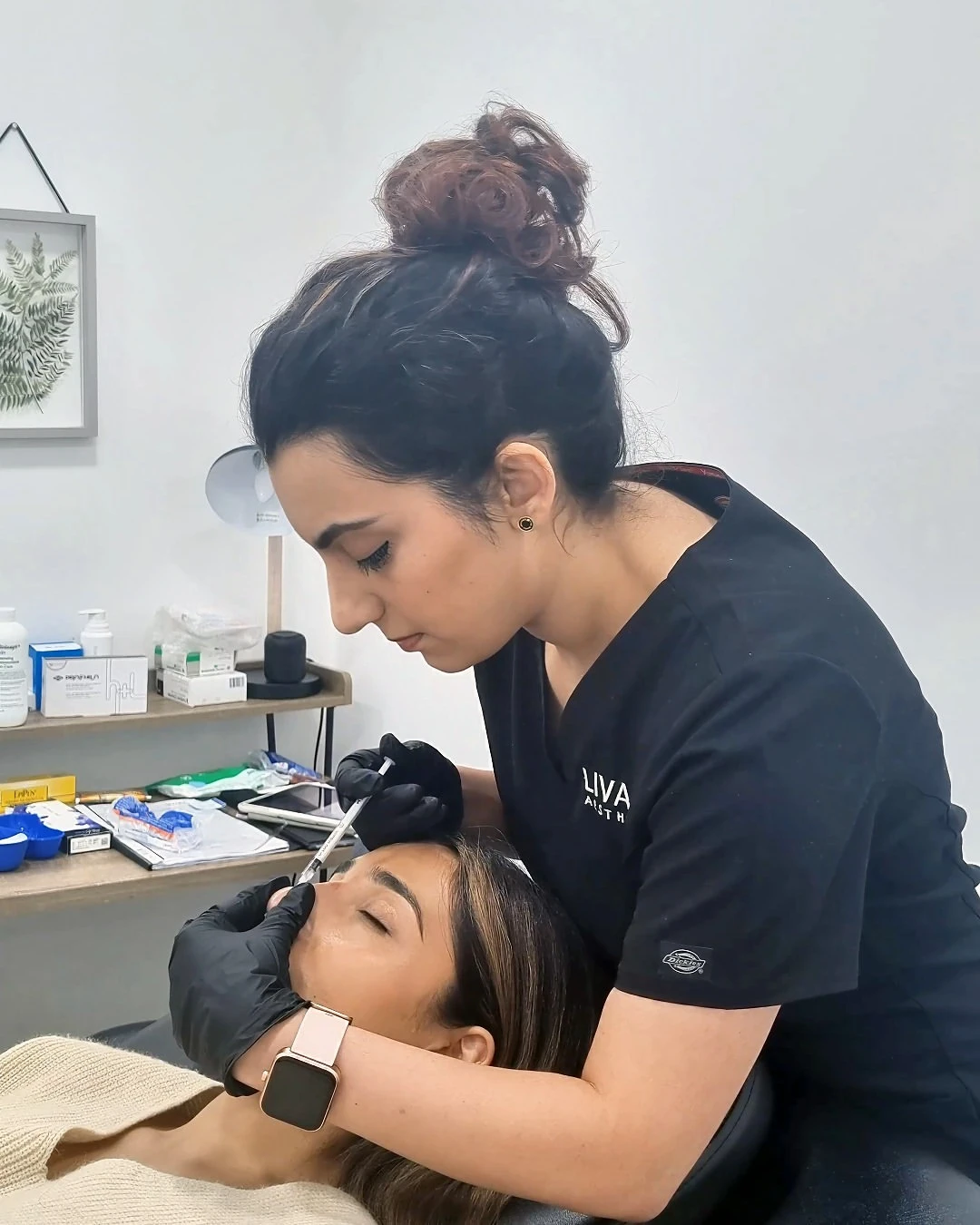
What If You’re Not Happy With the Results?
If you’re unhappy, don’t worry. Because the fillers are reversible, your practitioner can dissolve them using hyaluronidase. This enzyme breaks down the filler safely, allowing you to adjust your nose shape or try alternative options.
Open communication with your practitioner is important to get the best outcome.
In Conclusion
Non-surgical rhinoplasty is a safe, effective, and convenient way to enhance your nose’s appearance without surgery. It offers immediate, natural-looking results with minimal downtime and fewer risks than surgical options.
If you want subtle improvements like smoothing bumps, lifting the tip, or correcting asymmetry, this treatment might be perfect for you. Just be sure to choose an experienced practitioner and have a clear understanding of what to expect.
Ready to learn more? Book a consultation with a trusted clinic and discover how non-surgical rhinoplasty can help you feel more confident and balanced in your own skin.
